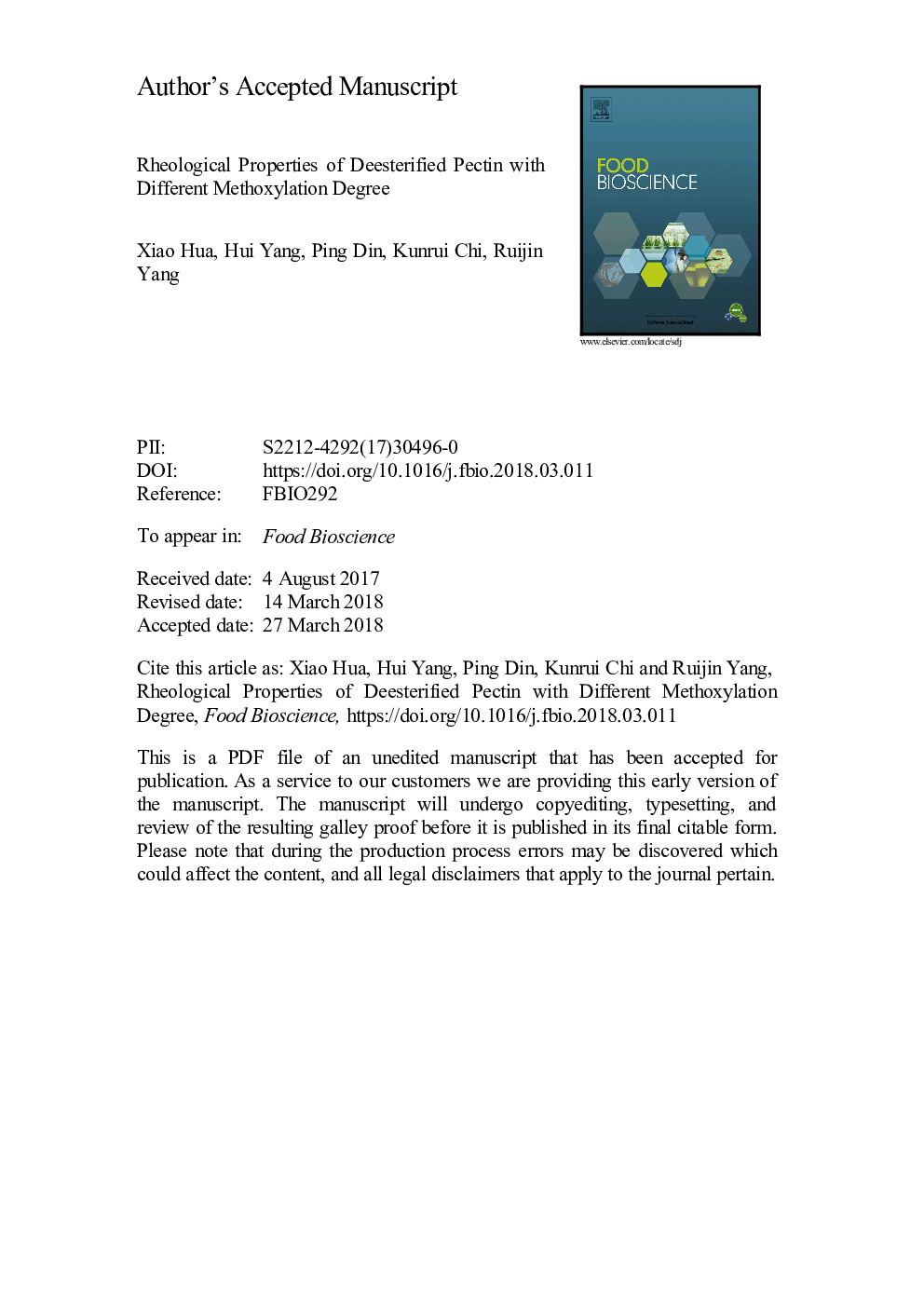| Article ID | Journal | Published Year | Pages | File Type |
|---|---|---|---|---|
| 6488834 | Food Bioscience | 2018 | 35 Pages |
Abstract
High methoxylated citrus pectin was deesterified by alkaline or pectin methylesterase (PME) to produce pectin with various methoxylation degree (DM) from ~50% to <â¯10%. Alkaline deesterification (pâ¯<â¯0.05) was effectively achieved at pH>â¯10. At pH 12 pectin DM could be reduced to lower limit of 15.91â¯Â±â¯2.55% under 4â¯â after 300â¯min but further to 6.81â¯Â±â¯1.46% under 20â¯â within 30â¯min. Stronger alkaline treatment led to heavier pectin degradation, especially suggested by the statistically significant (pâ¯<â¯0.05) reduction of weight-average molecular weight (Mw). Namely the heavy pectin chains were disrupted by alkaline. Enzymatic deesterification using ROHAPECT MPE resulted in a DM of 28.78â¯Â±â¯0.78% with 0.1% (w/w) enzyme amount and further to 14.67â¯Â±â¯0.80% with 1.5% (w/w) enzyme amount within 5â¯h. Correspondingly, the enzymatic-deesterified pectin (DM=14.67â¯Â±â¯0.80%) presented a much higher intrinsic viscosity ([η]) of ~2000â¯mL/mg in comparison to raw material (~1600â¯mL/mg) while the alkaline-treated pectin (DM=10.81â¯Â±â¯1.85%) had a low [η] of ~700â¯mL/mg due to chain decomposition. Microscopic gelling of all the alkaline deesterified pectins was Ca2+-dependent (> 44â¯mg/g), but particularly the product with DM of 9.36% could gel at low Ca2+ concentration (4-8â¯mg/g). Enzymatic deesterified pectin produced by RAPIDASE® PEP (DM 30.83%) and ROHAPECT MPE (DM 14.67%) could gel at pH 2 in the absence of Ca2+ and their Ca2+-dependence increased with pH increase, while the product by NOVOSHAPE KEN00536 always needed >â¯24â¯mg/g Ca2+ for gelling under pH 2.0-4.0.
Related Topics
Physical Sciences and Engineering
Chemical Engineering
Bioengineering
Authors
Xiao Hua, Hui Yang, Ping Din, Kunrui Chi, Ruijin Yang,
